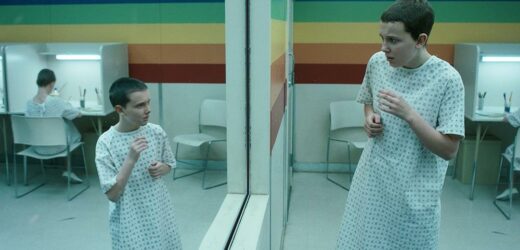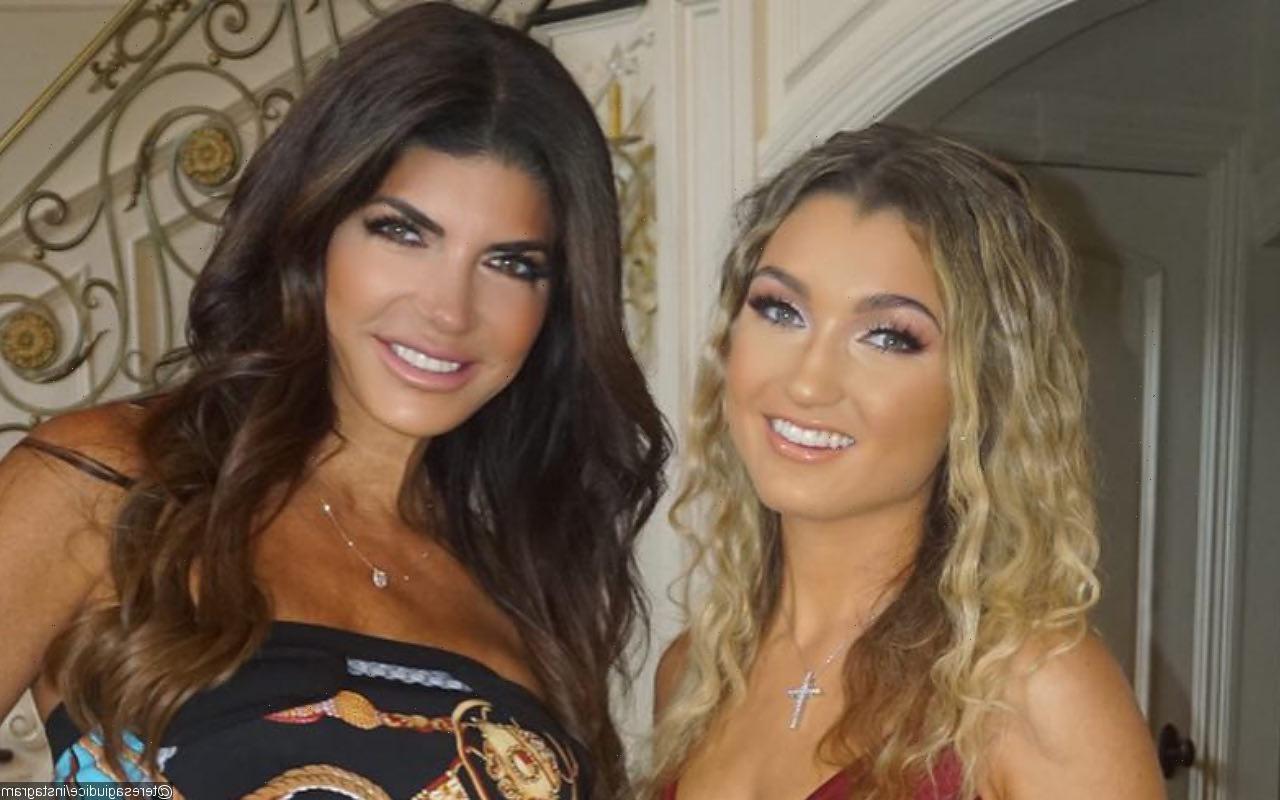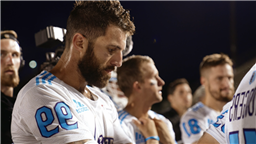SPOILER ALERT: This story discusses several major plot developments in Season 4, Vol. 1 of “Stranger Things,” currently streaming on Netflix.
For Season 4 of “Stranger Things,” Millie Bobby Brown had the rare opportunity to revisit the role that she’s been playing since she was barely 11 years old, by guiding another girl to play an even younger version of the character. Extended flashback sequences set in 1979 — four years before the events of Season 1 of the series — depict Eleven’s time as a captive child in Hawkins Lab with Dr. Martin Brenner (Matthew Modine). Since the vast majority of those sequences are seen through the prism of Eleven’s memories, Brown performed most of those scenes. But occasionally, young actor Martie Blair (“The Young and the Restless”) stood-in for the 9 year old version of Eleven, and her face was digitally replaced with Brown’s in post-production.
As the 18-year-old Brown explained to Variety, she worked extensively with Blair on set for those scenes, to help her capture how Eleven would have moved and reacted.
“I was like, ‘Let me take you through what I went through and we’ll figure it out together,’” she says. “It was really nice.”
Brown also discussed what it was like floating in the salt water tank Eleven uses to access her repressed childhood memories, why she implicitly trusts “Stranger Things” creators Matt and Ross Duffer and what she thinks really happened in the final scene of Vol. 1 of Season 4 — when young Eleven sends One (Jamie Campbell Bower) into the Upside Down, where he begins to transform into Vecna.
One of the most striking things about this season has been seeing the younger Eleven in contrast to you now. How did that work on your end?
That process was very unique for me. I had to really sit down with the Duffer Brothers and Shawn Levy to understand what specifically was happening, who was playing what and how that was going to work out. Once we talked through it, it only made sense to have me play my younger self, and every time she sees her reflection, or recalls a memory, it’s her [actual] younger self. We got this incredible small child to play me, Martie Blair.
How did the face replacement work?
I went to LA and we did this really cool process called the Lola machine. For three days, I worked in this room and basically did every single scene that Martie had done, but just acted with my face to replicate all of her movements. It was a really interesting process — definitely once in a lifetime.
How did you work with Martie when she was shooting her stand-in sequences?
It was really important for me to help her through that because I didn’t really have anyone helping me through who Eleven was going to be. I would come to set before my scenes and direct her through everything. I would hide behind the wall and scream with her when she got anxious about screaming to do my powers. I would help her with some of her facial twitches and things like that — very specific things that no one probably would even tell, but me watching the show, I wouldn’t be able to live with myself if I didn’t help her through it.
The Duffers also told my colleague that to get Eleven to the right age in the flashbacks, they sent the VFX team clips of you from “Once Upon a Time in Wonderland,” since you roughly 9 years old then.
I didn’t know that. Wow. That’s wild.
So what did it feel like when you finally saw the final version and yourself, basically, as a nine year old?
I mean, it always shocks me what we can do in our show. I was so pleased with the outcome. And, you know, Martie’s performance was amazing. They just had to add my face to it. That mixture of all of us working, collaborating together — it was so weird, so different.
In the present day of the show, Eleven also takes a step back socially after her move to California — Martin even tells her that she’s been regressing. How was that for you to play, given the progress she makes in Season 3?
It was really nice to see Eleven dealing with some of the biggest and realest monsters in the world, like bullying and self-identity. These are things I’ve personally been through and I was struggling with. As a 17-year-old girl, you start to gain more autonomy and really try and stand on your own two feet, and this is what Eleven’s trying to do. She is attempting to continue her journey without the male influence in her life. So I think that she has to regress, to go through these things to carry on and put her best foot forward.
For every shot where Eleven is inside the Nina tank, I kept worrying that the water was going to pool into your eyes. What was that like to shoot?
I’m not gonna lie, that was hard. The amount of salt that they put in there in order for me to float is real. They actually do get an egg and put it in the water, and if it floats, then that’s when I can get in. I’m in there for a few days, 10 to 12 hours a day. Everyone’s moving around you and you can’t get out. I couldn’t hear anyone, because obviously my ears were underwater. So when I’d get notes, I was just hoping that I was doing what maybe they were saying. We had to use a microphone in order for them to actually get their note across to me. Also, I suffer from claustrophobia, so when we closed the tank, I definitely felt like, “Oh my gosh, I am Eleven, I am really going through this.” Obviously, what she has to go through, reliving those memories, was probably harder, though, than a tank.
In the flashback sequences, what was it like for you to put yourself back in the mindset of Eleven at that age? She’s so young, and it’s all so harsh and terrifying.
Because she was raised in an asylum with a man that she isn’t biologically related to, but emotionally and psychologically attached and connected to, she does suffer with serious Stockholm Syndrome. I didn’t know this when I was 10 years old, because nobody would have explained that to me — and nor did I probably need to know. But now being 17, going back to that 10-year-old self, I’ve learned all of this new information about Eleven. So I got to bring a whole new dynamic and perception to Eleven that I had never been able to explore because of how young I was. This person who hurts her, Papa, he also loves her the most. And facing him again, in this relationship that is so destructive and so painful, was one of the hardest things I’ve had to do within the show.
In the final episode of Vol. 1, Jamie Campbell Bower delivers an extended monologue to you that explains so much about his character and the mythology of the series itself. First, what was that like to shoot, where El has to be transfixed in terror for so long?
What I found really interesting about the scene is that this really does conclude the memory that she has to relive. So, I mean, in all honesty, the hardest thing I’ve ever had to do as a young actor, in my short career, is having to perform Eleven recovering from dissociative amnesia. She really has to remember something her brain has protected her from. So this conversation, she actually doesn’t remember because our brain protects us from it. I have to almost pretend I’ve already gone through it, which was also very hard, and then relive it again. It’s so emotional, and so confusing, because this tiny person is being told all of this information and almost being asked to join him on this evil and demonic journey that he wants to go on. And again, going back to self identity, this is the moment where she realizes she isn’t the monster.
Was it satisfying to have so many questions answered about Eleven and the Upside Down?
Of course. I’ve had so many questions for years and years as to where Eleven came from, who she is. What were Dr. Brenner’s intentions? What are his intentions now? Is he still alive? But, you know, the Duffer Brothers, they’re the only people in this world that know “Stranger Things” better than we do. I trusted that they would always bring it home and answer everyone’s questions. So this season was the season that you will get all of those questions answered.
Please help settle a debate that I’m having with my colleagues: Did the Duffers tell you that Eleven created the Upside Down in the scene with Jamie’s character at the end?
They did tell me. She does. She opens the rift.
But was the Upside Down already there when she opens it, or did it not exist before she opened it?
This is too big of a debate for me to answer. I’m so worried. I think — no, no, no. I think that the alternate universe was always there. That is always going to be under Hawkins. I just think she has access to it. I don’t think that she created the Upside Down. No, I think that it was always there, I think she just created a gate to it which no one could before.
Got it.
Who won? Was it you or the colleague?
Me — I think! So there are two more episodes to go for the season for Vol. 2, which premieres July 1, and each of them are effectively feature film length. Did you have a sense of that as you were shooting them?
Well, when I was filming, I was like, they’re gonna have to cut so much to fit in hour long episodes, because we’ve been filming for three years. Then when they told me that the episodes were, you know, really long, I was like, ‘Oh, okay, I understand now — every scene is staying in.’ We’ve just got a lot of story to tell.
Eleven ends Vol. 1 finally regaining control of her powers — so what are you looking forward to people getting to see in Vol. 2?
Going back to the Duffer brothers, they created Eleven in such a dynamic way this season, and really directed and wrote this heroine with layers and layers that we have to peel back. These two episodes really give you an insight on this heroine coming to life and letting Eleven do what she needs to do in order to save her friends.
The Duffers have said they’re starting work on Season 5 soon — what would you most like to happen?
Because the Duffers have always done everything that I’ve wanted for Eleven, I’m gonna leave it up to them. I know it’s a really boring answer, but I don’t think about it. Soon as I get on set, they tell me what I’m doing, and that’s it. Let the geniuses be geniuses and let the actors act. Quote by Millie Bobby Brown!
This interview has been edited and condensed.
Source: Read Full Article



